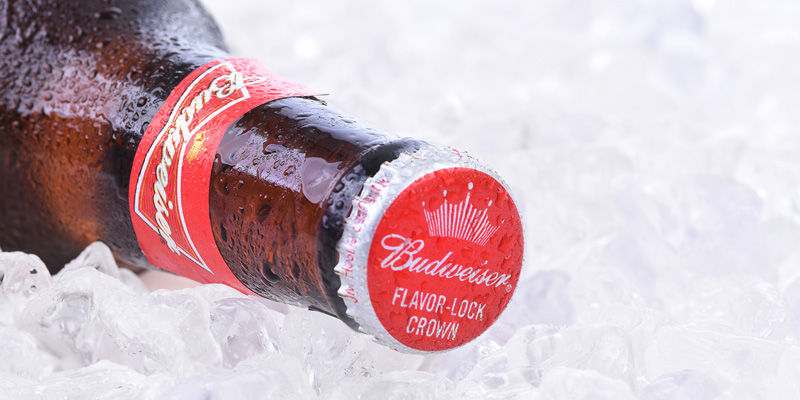
Back in the day, grabbing a beer was easy because there simply weren’t many options. There were no session IPAs, no fresh-hopped IPAs, and no double-bourbon-barrel IPAs. Grabbing a beer meant grabbing a six-pack of Budweiser, and you were done. It’s easy to praise today’s variety as a sign that we have entered a more enlightened time. But if the past, when American macro lager reigned supreme, can be praised for anything, it’s for its simplicity. And simplicity is a virtue in both taste and choice.
The first thing you notice about Budweiser is that you hardly notice anything. It’s harder for those of us familiar with the drink. To truly taste something you know well requires a deep kind of focus. It requires removing that familiarity, and relearning what that drink actually tastes like. (“It tastes like Budweiser,” I hear repeated in my head, over and over.) Pouring the pale yellow liquid into a glass just makes matters worse, as all of the aromas that make the beer what it is quickly float off. Trapped in the bottle, where the narrow neck keeps the flavor from escaping, it’s possible to come to a real set of tasting notes. There’s a sweet rice flavor, like the starchy taste left over when you forget to wash rice properly before cooking it. There’s also a touch of bitter hops, just barely there like when a bit of arugula gets stuck in your teeth. There’s no hint of the Beechwood aging process that’s advertised on the bottle, as far as I can tell, though what this would taste like is yet another question.
But these flavors, so difficult to scavenge and name, are not what makes a Budweiser a Bud. And its smell is not much help, either. Smell, that sense so closely linked to memory, has a way of making or breaking a beer. But if I had to say what Budweiser smells like, I would say it smells like stealing beers from your dad’s beer stash and hoping he won’t notice. It also smells like knowing he will notice, but being confident he won’t mention the purloined cans, because he’s banking on the fact that certain people don’t know about his stash. For a certain class of people, Budweiser’s nostalgia is both more bitter and more sweet than the beer itself.
This has been the case with Budweiser for years now. From what I can tell, the brand is not only aware of this, but it actively courts this view of its role in American culture. Its advertising campaigns – its entire ethos – seem designed to target a particular drinking style and drinking public, more than any flavor. Just compare the recent advertisements for Budweiser and its little brother Bud Light. Budweiser’s commercials target working-class people (or people who were once working-class), with farms and Clydesdales. Bud Light targets binge drinkers and millennials.
Budweiser tastes like beer-flavored water because it’s not something you’re supposed to sit down and contemplate. It’s meant to be chugged until your favorite baseball player who just hit a home run finally makes it around the bases. It’s meant to be slugged back every time a dirty Ping- Pong ball finds its way into a cup of off-yellow liquid. It’s meant to be sipped from the can while fishing. It’s meant to satisfy the husband who doesn’t give a shit what he’s drinking, so long as it gets him through that awkward conversation with that awkward friend of a friend at that awkward party his more personable wife made him go to.
Perhaps more than anything, Budweiser is a clean slate, designed to absorb memories and then hold them just out of reach. The King of Beers’ bright red label is more a trigger warning for the associations and memories that will come to mind while drinking it, than it is a hint at the flavors inside the bottle. But when you pick up your next case, don’t mistake that simplicity for garbage. It’s not a fresh-hopped IPA or a double-bourbon barrel, but it smells like home.
